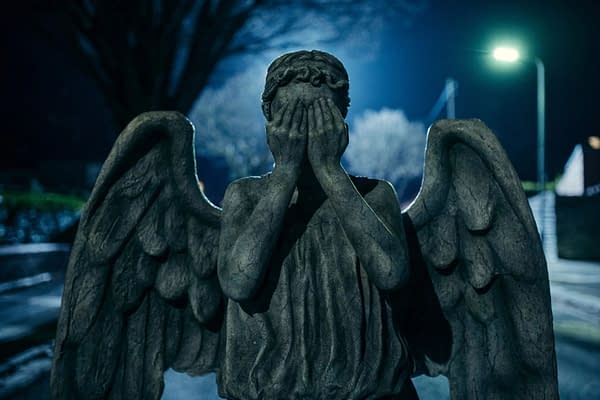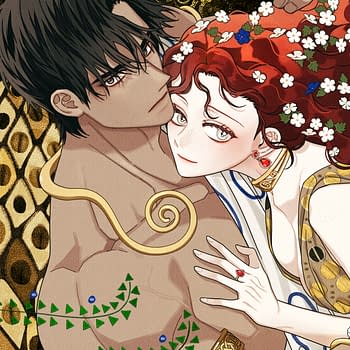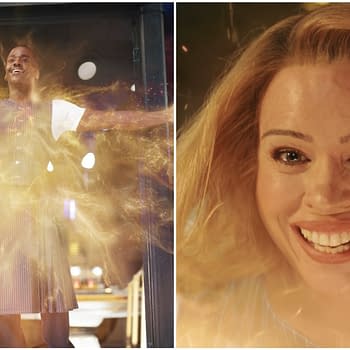Posted in: BBC, Doctor Who, TV | Tagged: bbc, chris chibnall, doctor who, Don't Blink, steven moffat, the ring, weeping angels
Doctor Who: Examining The Beauty & The Horror of The Weeping Angels
The Weeping Angels are the most original high-concept Doctor Who monsters to be introduced in nearly 30 years, with elegance to their horror.
Ahh, the Weeping Angels, the most original new villains, or monsters, to be introduced to Doctor Who for decades, and the most memorable, certainly most impactful. They're also the topic of the most recent BBC compilation video – so we thought that would be the perfect time to look back at the long-running show's "big bads." If Steven Moffat is to be remembered for one thing, it's creating them for the series. They are monsters you need to look at, not look away from, the most High Concept monsters for over twenty years, thanks to Moffat reading up on Quantum Theory.

The inspiration behind the Angels began with Heisenberg's Uncertainty Principle, which states that the results of an experiment can be affected by observing it. Moffat was also inspired by the general principle of kids hiding their eyes from seeing something scary on Doctor Who while delighting in it at the same time since the series is the definition of a safe scare, a show for exploring fears. What if you had monsters that you had to keep looking at to stop them from coming after you? And what if they were everywhere, disguised as common objects, hiding in plain sight? And what if they were spooky common objects found im spooky places, like weeping angel statues found commonly in cemeteries? They're a Science Fiction version of ghosts or demons. And how do they kill you? By taking your time away, your life, literally, and sending you back to another time where you are lost and left to pick up another life from scratch and die away from your old life. The angels exist in the Quantum realm, so they can't die, but they can freeze. To be seen is to be pulled out of our reality, which is why they freeze when seen.
"Don't Blink" is one of the greatest scripts anyone has ever written for Doctor Who, and Moffat has contributed to other greats since. When the Weeping Angels showed up again, he introduced another dimension to them: malice. They enjoy tormenting their prey. Moffat also sneaks in hints of a 53rd Century universe in the series that's never been mapped out: it's a time where there are human Time Agents like Captain Jack Harkness who can time travel, working for an agency that might not have always been good guys, and where the Church of England has an armed military wing where priests are highly trained soldiers. That period is also where River Song (Alex Kingston) is incarcerated for her crime of killing The Doctor even though she really didn't (it's complicated as Moffat tends to make his continuities).
The only problem with The Weeping Angels is a little of them goes a long way, so they shouldn't be used too often. The more exposed they are, the more they lose their mystery, which nearly happened during "Flux," though Chris Chibnall did steal some cool horror moments from Japanese horror movies of them creeping out of TV screens like Sadako from The Ring to scare the kids. Because the Angels are nothing if they don't scare the hell out of children. That's what really counts on Doctor Who in the end.













